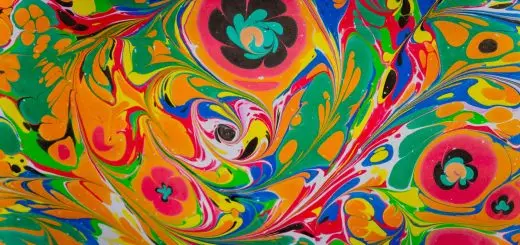Theosophy and the Study of Symbolism

Looking for more amazing products? Check out our online store and explore our collection here! Happy shopping!
Before diving in, please note: This post is for informational purposes only. If you’d like to know more about how we approach topics, feel free to check out our friendly Disclaimer Page.
Hey there, amazing readers! 
We’re committed to delivering quality posts, and your support (even just sticking around despite the ads) means everything to us. So, bear with us, and thanks for helping us keep the good vibes rolling. Now, on to the fun stuff!
TRANSLATE BUTTON AT THE END OF THE ARTICLE
A Quick Overview
Theosophy is a spiritual movement that seeks to explore the underlying connections between all religions, philosophies, and sciences.
At its core, Theosophy aims to uncover the universal truths that unite humanity and the cosmos.
One of the key elements in Theosophical teachings is the study of symbolism, which plays a vital role in understanding the hidden meanings behind various religious and philosophical traditions.
Symbolism serves as a bridge between the material and spiritual realms, allowing individuals to access deeper levels of consciousness and insight.
Introduction to Theosophy
Theosophy, derived from the Greek words "theos" (god) and "sophia" (wisdom), can be described as the wisdom of the divine.
It was founded in the late 19th century by Helena Petrovna Blavatsky, Henry Steel Olcott, and William Quan Judge.
Theosophy aims to promote universal brotherhood, encourage the comparative study of religion, philosophy, and science, and investigate the unexplained laws of nature and the powers latent in humanity.
Understanding Symbolism
Symbolism is the art of using symbols to represent ideas or qualities.
Symbols can be images, objects, or actions that convey deeper meanings beyond their literal interpretation.
In various spiritual and religious traditions, symbolism plays a crucial role in conveying esoteric teachings and hidden truths.
By studying symbols, individuals can gain insights into the mysteries of existence and the interconnectedness of all things.
Theosophical Perspective
From a Theosophical perspective, symbols are seen as keys that unlock the mysteries of the universe.
Theosophy teaches that symbols are not arbitrary but are rooted in universal truths that transcend cultural and historical boundaries.
By understanding the symbolic language embedded in myths, scriptures, and rituals, individuals can decipher the underlying truths that connect all spiritual traditions.
Symbolism in the Esoteric Tradition
In the esoteric tradition, symbols are used to represent spiritual principles, cosmic forces, and archetypal energies.
These symbols serve as tools for inner transformation and spiritual growth.
By meditating on symbols and contemplating their meanings, individuals can access higher states of consciousness and align themselves with the divine order of the universe.
The Role of Symbols in Theosophy
Symbols play a central role in Theosophy as they provide a means of communication between the finite human mind and the infinite realms of the spirit.
Through symbols, Theosophists seek to express abstract concepts, convey spiritual truths, and evoke transcendent experiences.
Symbols act as gateways to the deeper layers of reality, enabling individuals to connect with the divine essence within themselves and the cosmos.
Importance of Symbolism
The importance of symbolism in Theosophy lies in its ability to transcend the limits of language and logic, allowing individuals to grasp profound truths that cannot be expressed through words alone.
Symbols speak directly to the subconscious mind, bypassing the rational intellect and triggering intuitive insights and spiritual experiences.
By delving into the symbolic language of Theosophy, individuals can access higher dimensions of consciousness and expand their understanding of the universe.
Analyzing Symbolism in Theosophy
Analyzing symbolism in Theosophy involves interpreting the hidden meanings and allegorical messages embedded in myths, rituals, and sacred texts.
Theosophists approach symbols with a sense of reverence and humility, recognizing that they hold the keys to deeper spiritual insights and transformative experiences.
By examining symbols from different cultural and historical contexts, individuals can uncover the universal truths that underpin all religious and philosophical traditions.
Theosophical Interpretation of Symbols
Theosophical interpretation of symbols involves looking beyond the surface level of meaning to reveal the esoteric truths encoded within them.
Theosophists believe that symbols are multidimensional, reflecting different aspects of reality at various levels of consciousness.
By discerning the inner significance of symbols, individuals can gain a deeper understanding of themselves, the universe, and the divine principles that govern existence.
Symbolism in Theosophical Texts
Symbolism is pervasive in Theosophical texts, which are filled with allegories, metaphors, and cryptic references to esoteric teachings.
The writings of Helena Blavatsky, Annie Besant, and other prominent Theosophists are rich in symbolic language, inviting readers to contemplate the deeper meanings hidden beneath the surface.
By studying Theosophical texts with a discerning eye, individuals can unravel the symbolic codes that illuminate the path to spiritual enlightenment.
Practical Applications of Symbolism
The practical applications of symbolism in Theosophy extend beyond intellectual study to transformative spiritual practices.
By engaging with symbols through meditation, visualization, and ritual, individuals can attune themselves to higher frequencies of consciousness and activate their inner spiritual potential.
Symbols serve as catalysts for inner alchemy, guiding individuals towards self-realization, unity with the divine, and harmonious integration with the cosmic order.
Studying Symbols in Theosophical Practices
Studying symbols in Theosophical practices involves engaging with sacred geometry, mandalas, yantras, and other symbolic forms that embody cosmic principles and divine energies.
By working with symbols in a meditative and contemplative way, individuals can develop a deeper connection to the universal forces that shape their reality.
Theosophical practices such as visualizations, mantras, and rituals harness the power of symbols to evoke spiritual insights, healing energies, and transformative experiences.
Conclusion: Symbolism in Theosophy
In conclusion, symbolism plays a vital role in Theosophy as a means of conveying profound spiritual truths, facilitating inner transformation, and connecting individuals with the divine essence of the universe.
By understanding and interpreting symbols through a Theosophical lens, individuals can unlock the hidden meanings embedded in myths, rituals, and sacred texts, leading to deeper insights, expanded consciousness, and spiritual realization.
Symbolism in Theosophy serves as a bridge between the material and spiritual realms, offering a pathway to transcendence and unity with the cosmic order.
Through the study and contemplation of symbols, individuals can embark on a journey of self-discovery, spiritual growth, and enlightenment in harmony with the universal principles of existence.

The Enlightenment Journey is a remarkable collection of writings authored by a distinguished group of experts in the fields of spirituality, new age, and esoteric knowledge.
This anthology features a diverse assembly of well-experienced authors who bring their profound insights and credible perspectives to the forefront.
Each contributor possesses a wealth of knowledge and wisdom, making them authorities in their respective domains.
Together, they offer readers a transformative journey into the realms of spiritual growth, self-discovery, and esoteric enlightenment.
The Enlightenment Journey is a testament to the collective expertise of these luminaries, providing readers with a rich tapestry of ideas and information to illuminate their spiritual path.
Our Diverse Expertise
While our primary focus is on spirituality and esotericism, we are equally passionate about exploring a wide range of other topics and niches 

To ensure we provide the most accurate and valuable insights, we collaborate with trusted experts in their respective domains 
Our blog originally focused on spirituality and metaphysics, but we’ve since expanded to cover a wide range of niches. Don’t worry—we continue to publish a lot of articles on spirituality! Frequently visit our blog to explore our diverse content and stay tuned for more insightful reads.
Hey there, amazing reader! 
Check out our store here and take a peek at some of our featured products below! Thanks for being awesome!











